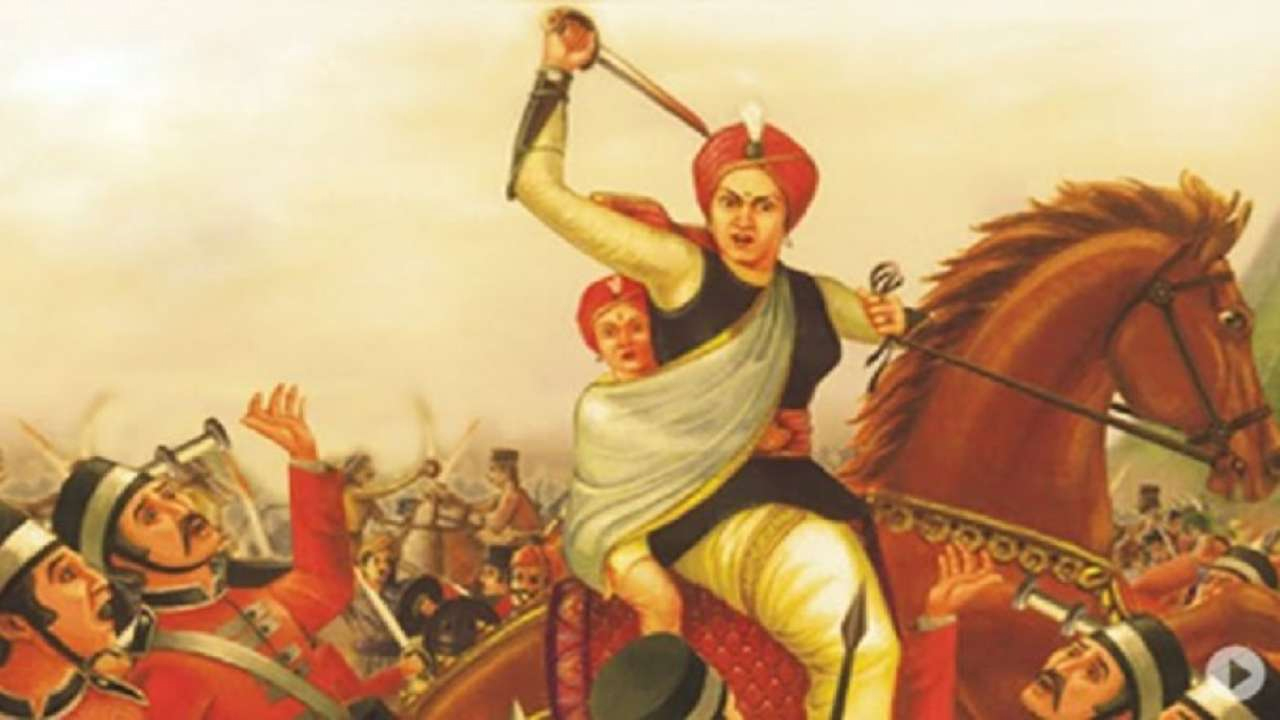Important Facts For Prelims
Rani Lakshmibai
- 01 Jan 2022
- 3 min read
Why in News
Recently, the Uttar Pradesh Chief Minister has announced that the Jhansi Railway Station in Uttar Pradesh will be known as Veerangana Lakshmibai Railway Station.
Key Points
- Early Life:
- She was born on 19th November 1828 in Varanasi, Uttar Pradesh.
- Her father’s name was Moropant Tambe. Lakshmibai’s childhood name was ‘Manikarnika’ and was affectionately addressed as ‘Manu’.
- She had a son Damodar Rao, who died within four months of his birth. Following the death of the infant, her husband adopted a cousin’s child Anand Rao, who was renamed Damodar Rao a day prior to the death of the Maharaja.
- Role in India's Struggle for Independence:
- Rani Lakshmibai was one of the brave warriors of India's struggle for Independence.
- In 1853, when the Maharaja of Jhansi died, Lord Dalhousie refused to acknowledge the child and applied the Doctrine of Lapse, and annexed the state.
- Rani Lakshmibai fought bravely against the British so as to save her empire from annexation. She died fighting on the battlefield on 17th June 1858.
- When the Indian National Army started its first female unit (in 1943), it was named after the valiant queen of Jhansi.
Doctrine of Lapse
- It was an annexation policy followed widely by Lord Dalhousie when he was India's Governor-General from 1848 to 1856.
- According to this, any princely state that was under the direct or indirect control of the East India Company where the ruler did not have a legal male heir would be annexed by the company.
- Thus, any adopted son of the Indian ruler would not be proclaimed as heir to the kingdom.
- By applying the doctrine of lapse, Dalhousie annexed the States of:
- Satara (1848 A.D.),
- Jaitpur, and Sambalpur (1849 A.D.),
- Baghat (1850 A.D.),
- Udaipur (1852 A.D.),
- Jhansi (1853 A.D.), and
- Nagpur (1854 A.D.)
Procedure For Changing the Name
- An executive order passed with simple majority by the State legislature is required to rename any village, town, city or a station, while an amendment of the Constitution with majority in Parliament is needed for changing the name of a state.
- It is noteworthy that the Union Home Ministry gives a green signal to the proposal to change the name of any railway station or place after getting no objection from the Ministry of Railways, Department of Posts, and Survey of India.





